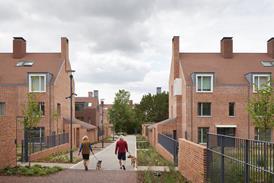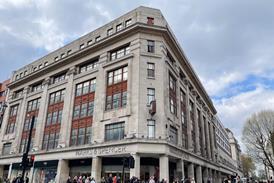It is 25 years since Tony Blair’s 1997 landslide victory and the architectural legacy is both good and bad, writes Ben Flatman

When Tony Blair swept into Downing Street 25 years ago this month, there was a widespread sense of optimism, not least among many architects. The Thatcher years had been something of a rollercoaster period for the profession.
First, the Tories had dismantled the local authority architecture departments, sending thousands of architects to the dole queues. Then there had been two calamitous recessions in the early 80s and 90s that saw many private practices go to the wall as well. Some felt architecture as a career was doomed.
By the late 1990s pretty much every architect worked in the private sector, often eking out a living from meagre housing and retail work. But many still yearned for the type of public commissions that had been the bread and butter of their predecessors in the 60s and 70s.
New Labour seemed to offer the possibility of a new start. It was pro-business, which chimed well with the newly entrepreneurial spirit of the profession. But it also offered the promise of investment in state schools and healthcare – sectors that had been pared back to the bone by 18 years of government antipathy towards public services.
Blair also seemed to have a refreshing star quality, in stark contrast to the almost comically grey John Major (how we miss him now!). He was vocally supported by one of the original starchitects - Richard Rogers.
The change in architectural culture and attitude to public sector investment had already begun under the Major government
And there was also the rather overlooked figure of Mark Fisher, who as a shadow Arts minister and then member of the first Blair government, worked hard in the background to push urbanism and city living as Labour priorities.
In truth, the shift was not as radical or as sudden as New Labour liked to make out. The change in architectural culture and attitude to public sector investment had already begun under the Major government. The Jubilee line extension was authorised in 1990 but opened under Blair in 1999.
The proceeds from the National Lottery, which Major had initiated, were used to fund a raft of millennium projects. Happily for New Labour, these all came to fruition during the Blair era.
Who now associates the Millennium Dome with the Tories? Not many I suspect, but it was a Tory project, which Blair only followed through with after much pleading from the liberal Tory – and cities enthusiast – Michael Heseltine.
And yet it would be unfair to suggest that New Labour did not have any achievements. It did, eventually, invest massively in schools and hospitals.
The quality of the architecture might have been a mixed bag, but it did provide a new generation of architects with an opportunity to design generous spaces for people to learn in and become healthy again.
Architects began to rediscover a confidence in their role, not just as bag-carriers for corporate greed but as a profession that could enable social opportunity, and even beauty and delight. The reality may not have always matched the rhetoric, but optimism is infectious and, for a while at least, it seemed to be everywhere.
But Blair’s “third way” philosophy, promising a smooth path between market capitalism and socialism, was clearly always a bit of a fantasy. The conflicting priorities of the market and public services were most clearly illustrated during this period by the Private Finance Initiative.
Another innovation of the Major era, designed to allow public sector investment to take place “off balance sheet”, New Labour jumped on the idea and turbo-charged it. Big firms were handed lucrative contracts to build and operate hospitals. Architecture was often an afterthought, but many new hospitals did get built.
With hindsight, perhaps Labour’s biggest mis-step in the built environment was its almost total failure to address the underlying problems in the housing sector. Blair did nothing to challenge the Thatcherite dogma that had effectively stopped all new council house building in 1980.
New Labour was neither as radical, nor as disastrous, as many on each side of the political divide would like to claim
It took almost 30 years, and the election of another Tory woman prime minister – Theresa May – to lift the spending caps on local authorities that would allow councils to start building again in 2018.
So 25 years after Labour’s 1997 victory, we are still not building enough social housing. And, during the Blair era, house ownership also fell massively. Consequently, one of New Labour’s legacies is a generation of people trapped in overpriced private rented accommodation – a huge amount of it former council housing. Meanwhile, the former prime minister and his family are reported to have a portfolio of 39 residential properties, worth an estimated £35m.
Looking back, New Labour was neither as radical, nor as disastrous, as many on each side of the political divide would like to claim. Like most governments, it made mistakes. But, as we again see schools facing the types of massive maintenance backlogs we have not seen since the 80s and 90s, and hospitals threatened with catastrophic structural failure, it is hard not to look back with a little nostalgia on a time when our shared public realm did not feel constantly on the verge of collapse.
















1 Readers' comment